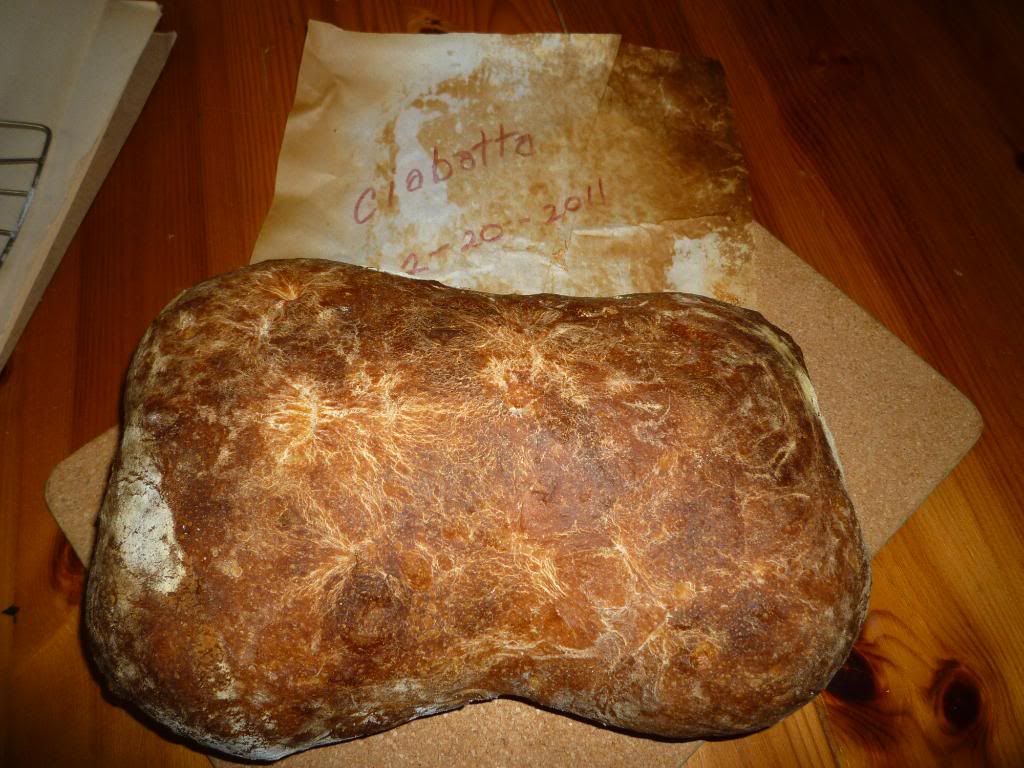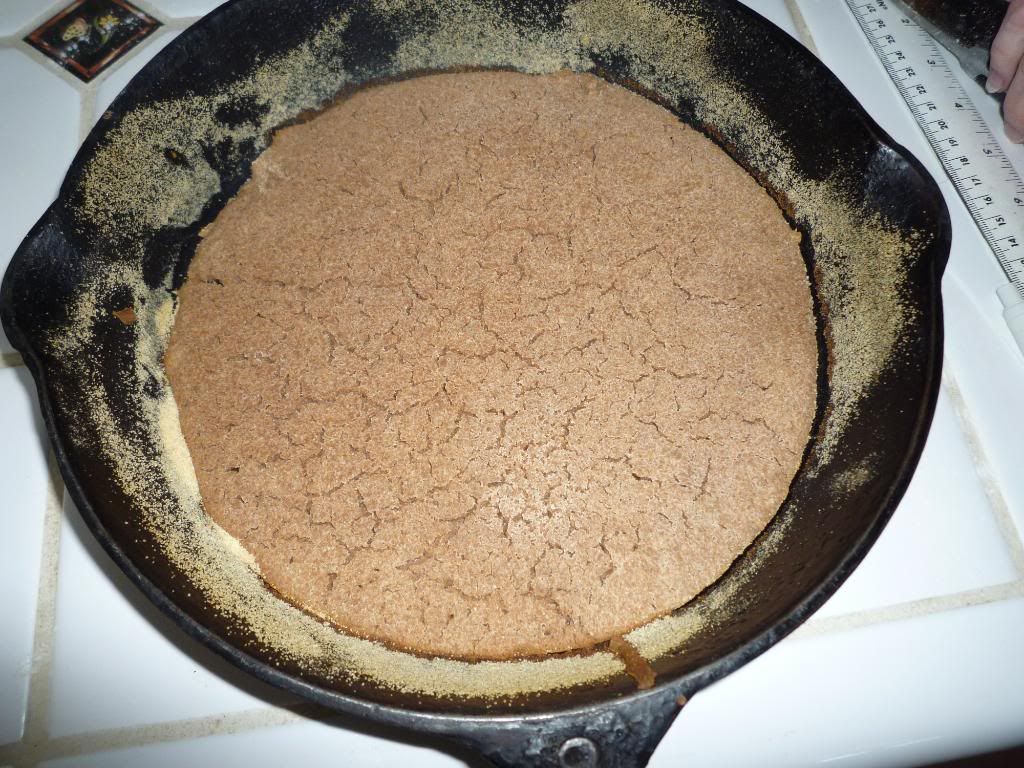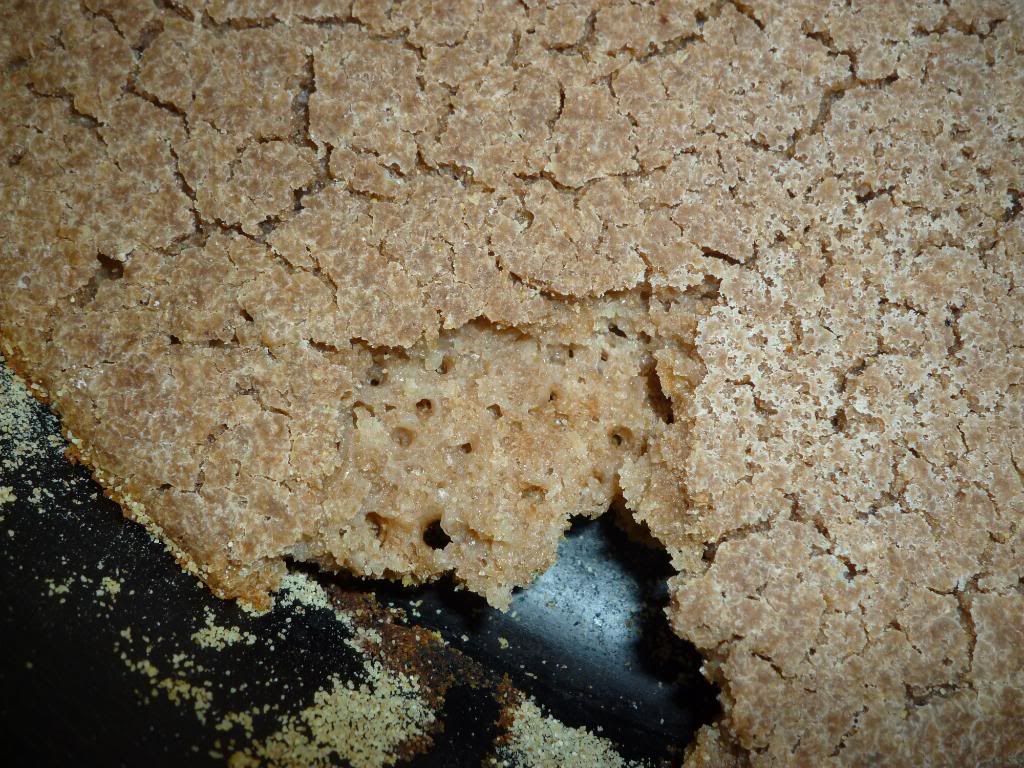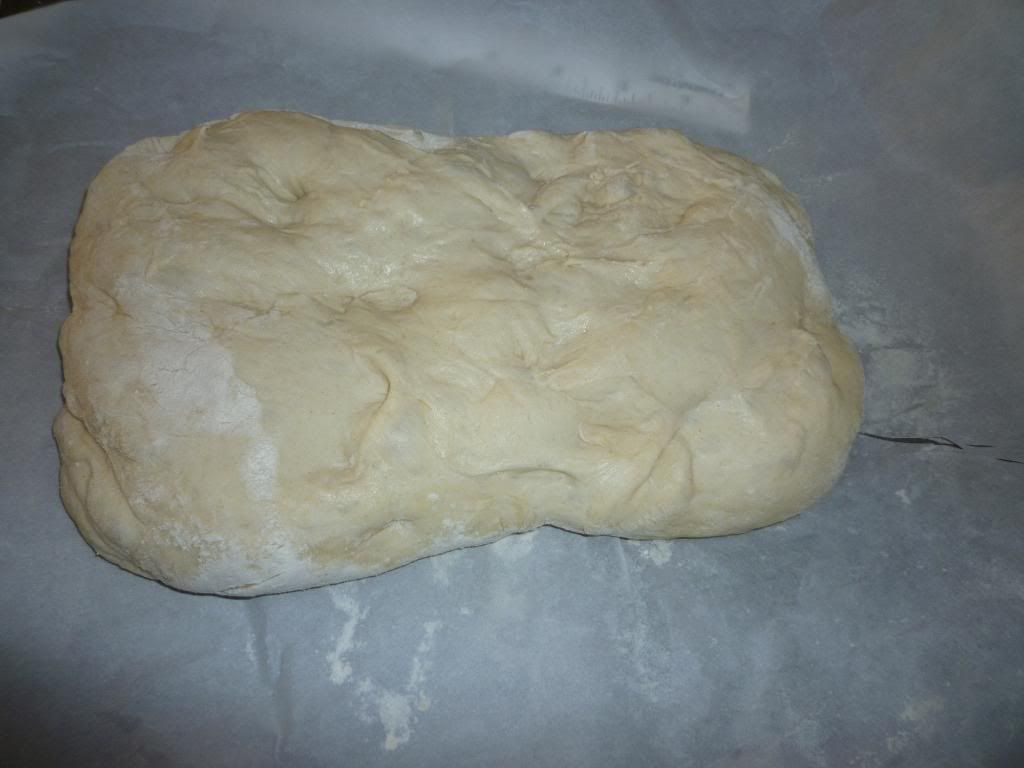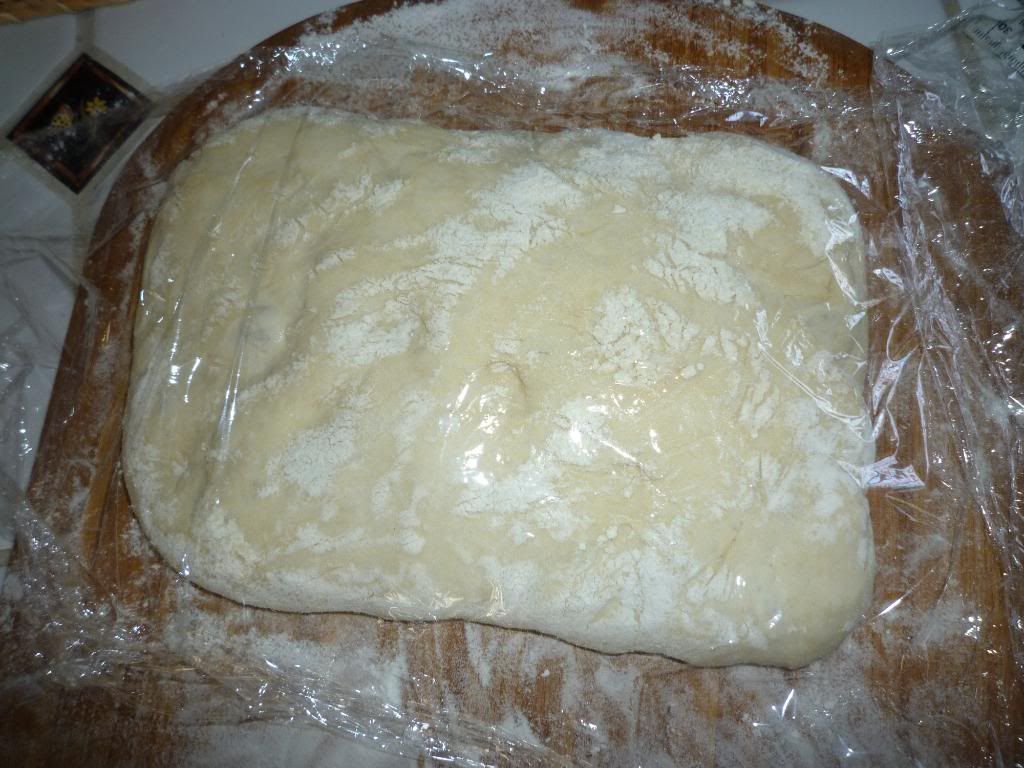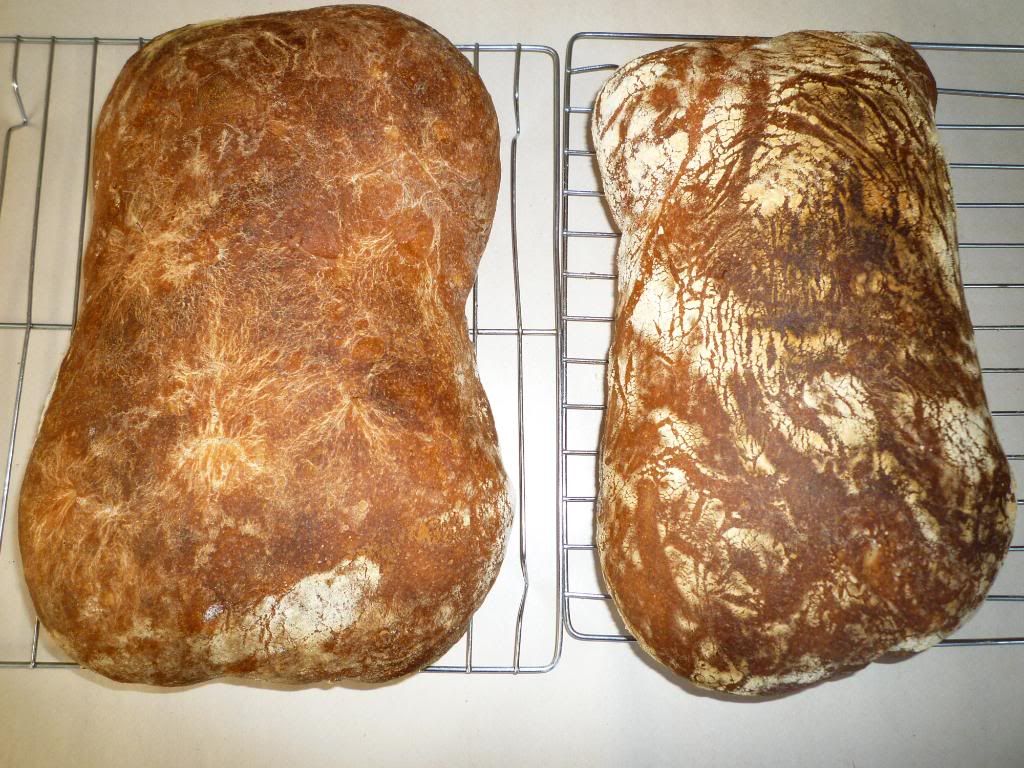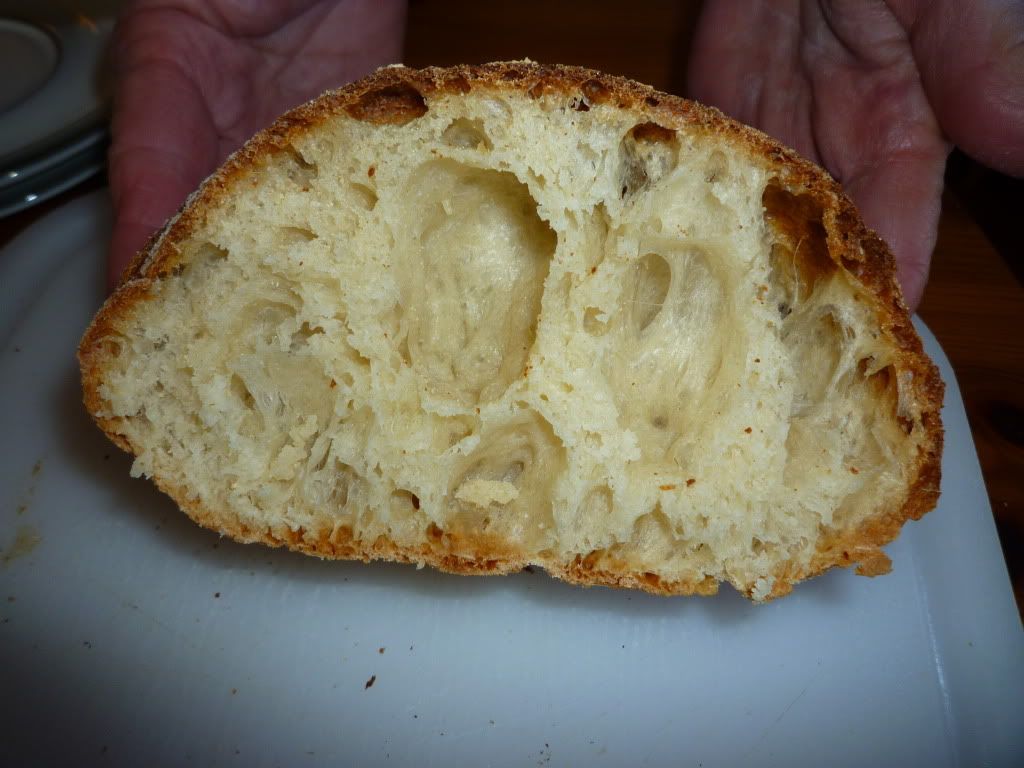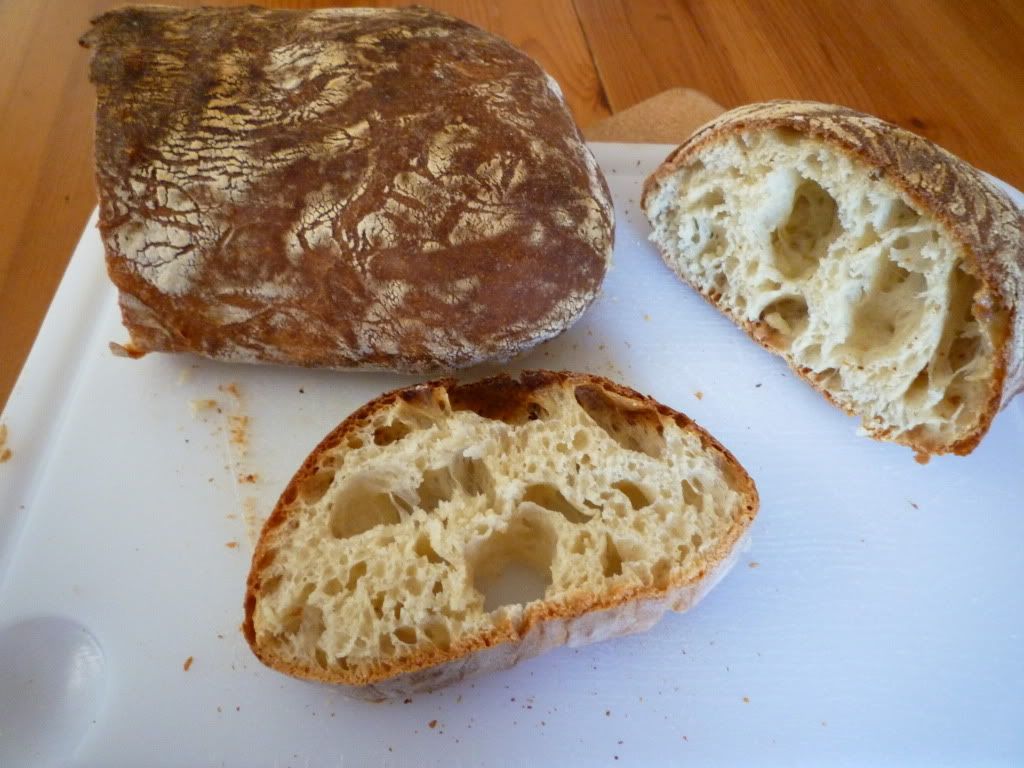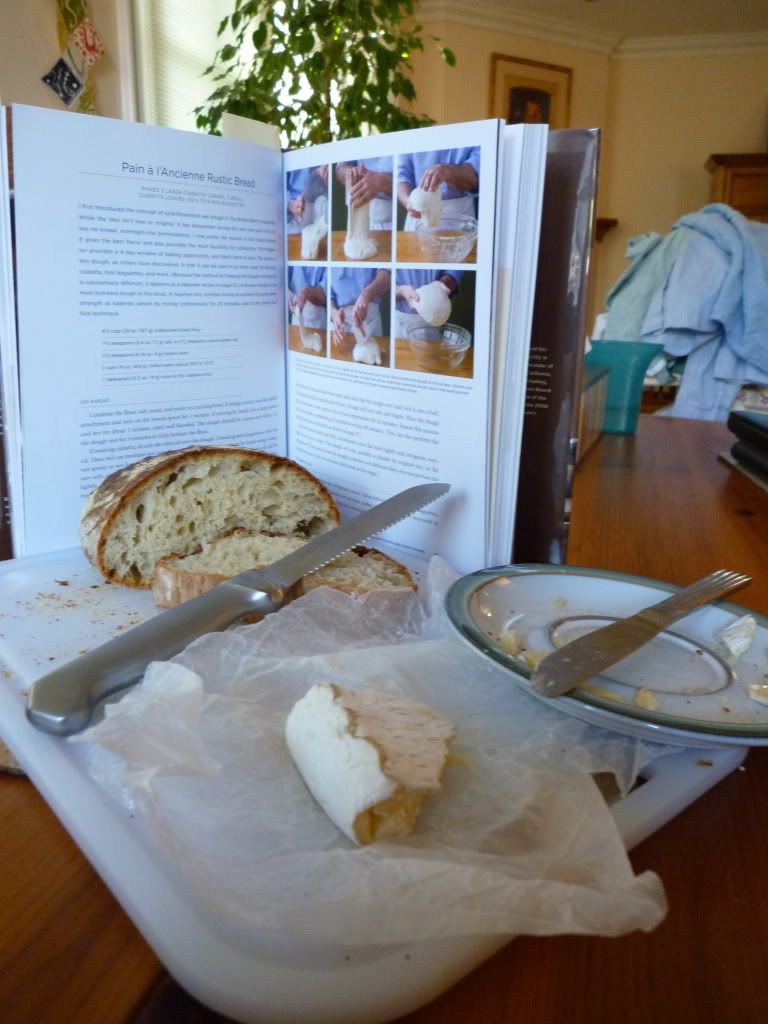Recipe
Sourdough Starter Elaboration
75g of whole wheat sourdough starter (100% hydration)
162g whole wheat flour
163g water (about 75 degrees F)
75g of whole wheat sourdough starter (100% hydration)
162g whole wheat flour
163g water (about 75 degrees F)
Dough
245g Bread flour
175g water (about 75 degrees F)
10g Salt (2t)
400g Poolish (all of it)
14g Olive Oil
Directions
Mix together the ingredients for the sourdough starter elaboration until they are completely incorporated. Let sit for 4-8 hours for it to almost double. If you don't want to use it immediately, put it in the refrigerator for up to four days.
Use the starter immediately or remove it from the refrigerator and use it immediately or after it warms up. If you use it directly out of the refrigerator, use slightly warmer water. Mix the starter with the water, then mix in the flour and the salt. Mix until the dough is course and sticky. Let the dough rest for five minutes in order to fully hydrate the flour.
Drizzle the olive oil over the dough. Kneed by hand for 2 minutes. Let sit for 5 min.
The dough is stretched-and-folded 4 times over a 40 minute period (as per Reinhart
Place in a lightly-oiled bowl, cover with plastic wrap, and place in the refrigerator overnight.
After this initial rise, place the dough in the refrigerator overnight.
On the next day, remove the dough from the refrigerator about 4.5-5 hours (perhaps a little longer) before baking (if you let it rise at about 75 degrees). At about 1.5 hours in, go through the shaping process.
To shape, turn the dough out onto a floured surface. shape the dough into a rectangle a loose and cut into two pieces with a bench knife or a large, sharp kitchen knife. Gently, without degassing, stretch the dough a little and then fold it in thirds, placing it on a floured surface, seam side down. Dust the top with flour and place under a bowl or under plastic wrap. Let proof for an hour under plastic wrap. Turn seam-side up and stretch into loaves and pat the sides gently to make them rectangular. If you want, you can place them on lightly floured parchment paper, or proof them on the floured surface (if you plan to put the loaves directly onto a peel and then into the oven). Let proof for another two hours. Heat the stone about 30 minutes before you begin to bake. You can load directly from a peel or use a peel or a baking sheet to load one on the parchment paper. Bake at 450 degrees F (or 425 convection) for 15 minutes under steam and then turn the bread around in the oven for 15 minutes to finish.
The bread was fantastic. Enjoy!









